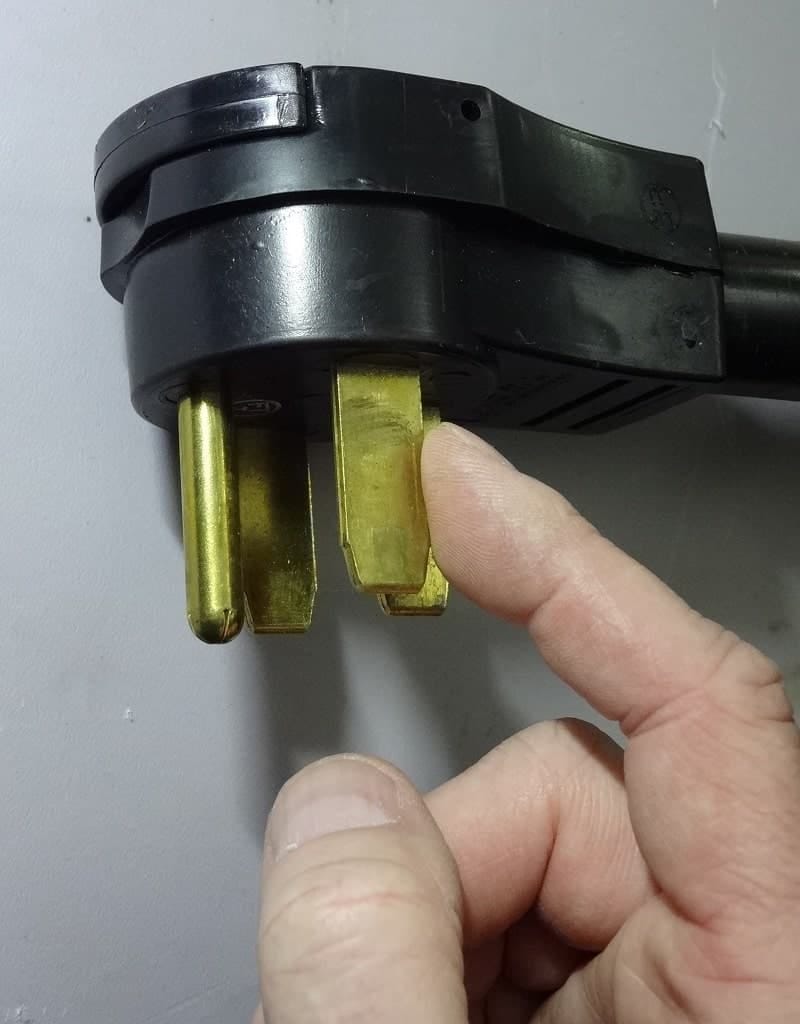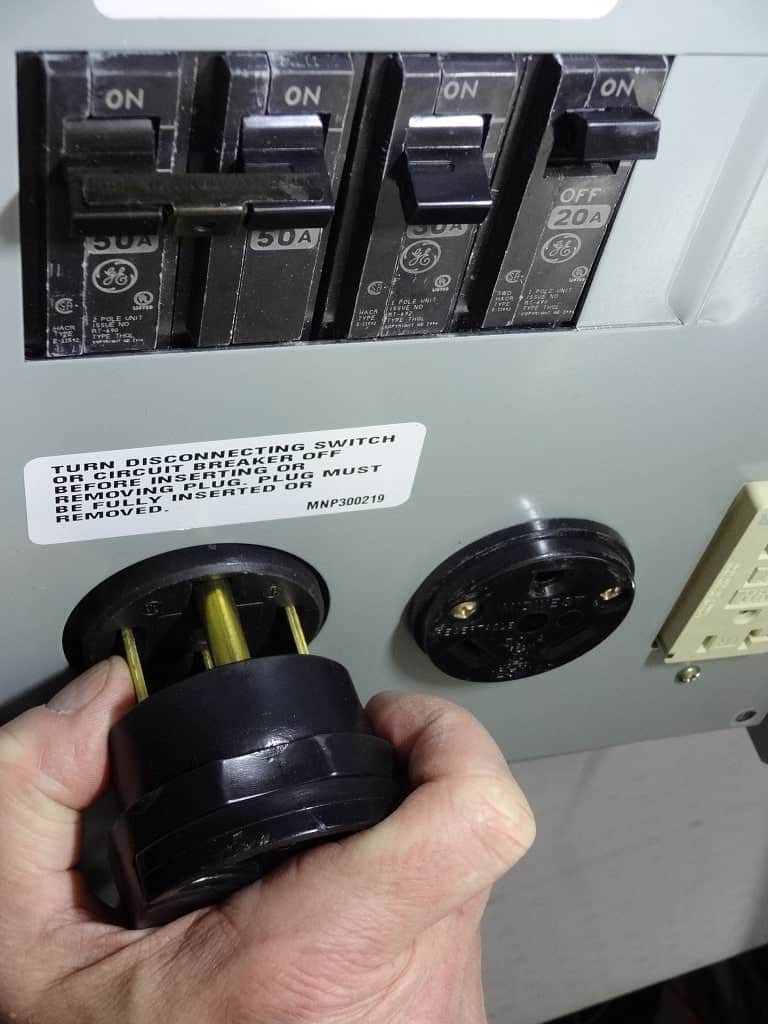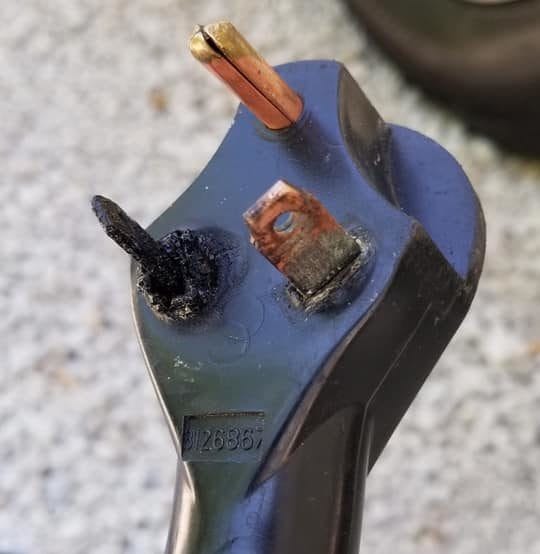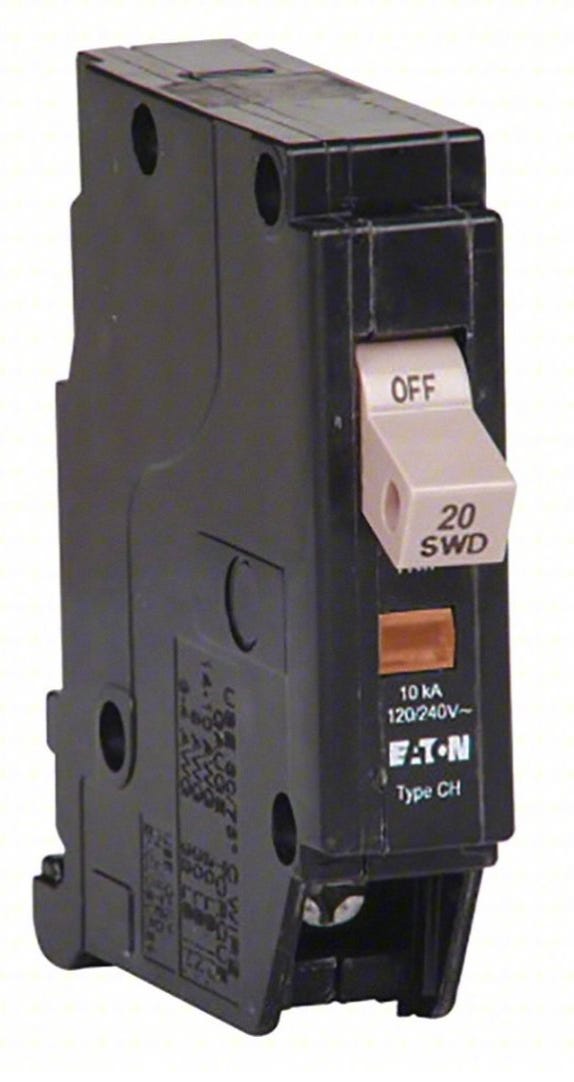Turn off the breaker before plugging in!
Don’t plug or unplug your RV from a pedestal with the power turned on
Dear Mike (aka J.A.M.),
We just returned from our initial Spring Wake-Up Trip. The RV Park we stayed at was exceptionally nice. At any rate, when I went to hook up to the pedestal, all the breakers were in the ON POSITION! Why do RVers leave the breakers on when they leave the campground?
Thought you should maybe mention someplace down the road for RVers to make sure they turn the breakers OFF before they disconnect their power cords.
Thanks. —Jeff
Dear Jeff,
That’s a great suggestion, so here it is. I’m not going to get into the psychology of “why” RVers do certain things, except to say that perhaps ignorance is bliss. So thanks for helping me to educate everyone.
The problem with plugging and unplugging your shore power cord while the pedestal circuit breaker is on is actually twofold.
First, the American- (NEMA-) designed plugs we use in our houses and RVs are not totally safe for plugging into a live outlet. As you can see from the picture, it’s possible for your fingers to slip into the gap and touch the live contacts before the plug is totally seated. That can result in a painful shock (or even electrocution – death from shock) if you’re standing in a puddle of water and make contact with a live wire. This suggests that it’s doubly important to turn off the pedestal circuit breaker before plugging or unplugging your shore power cord-set from a pedestal outlet in the rain. And we’ve all had to hookup or disconnect shore power in the rain, haven’t we?
Secondly (and just as important), plugging and unplugging your shore power cord while the pedestal breaker is on can induce arcing from the current trying to jump the gap in the contacts. This usually creates a bunch of pretty sparks which are actually tiny bits of your metal contacts being super-heated and burning up like tiny meteorites zipping through the atmosphere.
Doing it once or twice is no big deal, but doing it hundreds of times will cause a pitting and a reduction in the contact area of your plug and receptacle. And that reduced contact real estate will force all the current through a smaller surface area, resulting in increased resistance and plug overheating.
This constant bombardment of tiny hot spots in the contacts will result in oxidation (rust) which will increase the electrical resistance and contribute to even more heating of the plug. Eventually you’ll need to replace your RV’s shore power cord-set, which ain’t cheap! You want to inspect your shore power plug regularly to make sure it’s shiny and bright like the one in the picture above.
I’ve had a few suggestions from readers that pulling out the plug rapidly will stop it from arcing, but that’s simply not the case. And all circuit breakers should be rated for switching under normal loads.
For industrial settings we use SWD (Switch Rated) breakers for high inrush circuits like banks of florescent light fixtures. And if campgrounds wanted their circuit breakers to last for decades, then SWD rated breakers would be a good option. However, few of them would pay extra for SWD breakers. But I would guess that even residential circuit breakers would be rated for 10’s of thousands of cycles under load, which suggests perhaps a decade or more of normal operation.
I have a hypothesis that constantly plugging and unplugging shore power connectors with the circuit breakers on (and under load) contributes to the number of obviously overheated and visibly burned shore power plugs, especially the 30-amp versions.
Also remember that this plugging and unplugging under load is wearing out the contacts in the pedestal outlet as well. And that overheating probably contributes to loss of tension in the contacts. I’m sure all of you have plugged into a pedestal outlet that seemed really loose. I’m suggesting the looseness is likely the result of overheating which reduces the tension on the electrical contacts, and this overheating probably started with contact arcing from the shore power cord being plugged and unplugged with the circuit breakers on.
So, break the cycle of shore power contact abuse. ALWAYS make sure the pedestal circuit breakers are OFF before you connect or disconnect your shore power plug. Your electrical contacts will thank you for it. 😁
OK, everyone. Remember that electricity is a useful and powerful force, so we all need to pay attention to safety precautions while using it.
Let’s play safe out there…. Mike 😎







Great article Mike. I am a retired master electrical contractor. I worked camped last summer at a KOA campground. When doing the departures every morning I would check the pedestal to make sure the breakers were in the off position. I was amazed to find how many were left on. And yes, it was a constant job replacing the receptacles. Do to my career, I drove my manager crazy because he didn’t want to spend the money on replacement of what he thought were perfectly fine “outlets”. The 50a receptacles are $40 a piece. The 30a are less expensive.
Your articles are so well written for the non professional. Keep up the great work you do.
Great article Mike. BUT, the picture showing the power cord being disconnected with the persons' finger on the contact blade is scary. I never touch the contact blades when disconnecting... even if I think the power is 'supposedly off' because I see the breaker off. I have seen breakers appear to be off and as soon as I plug in my power cord the surge protector starts working.